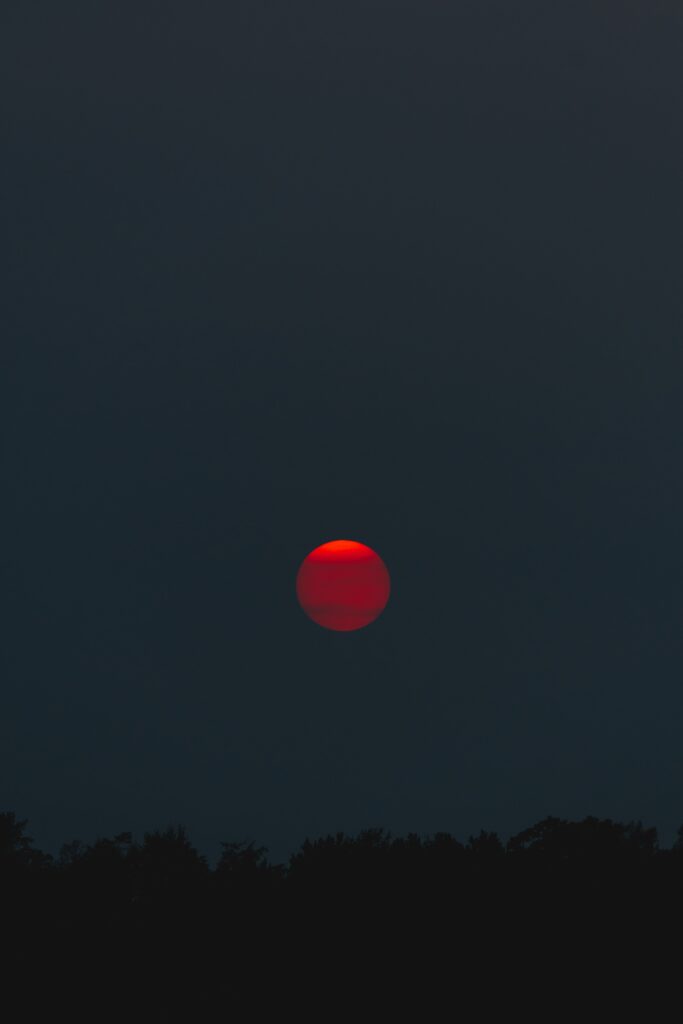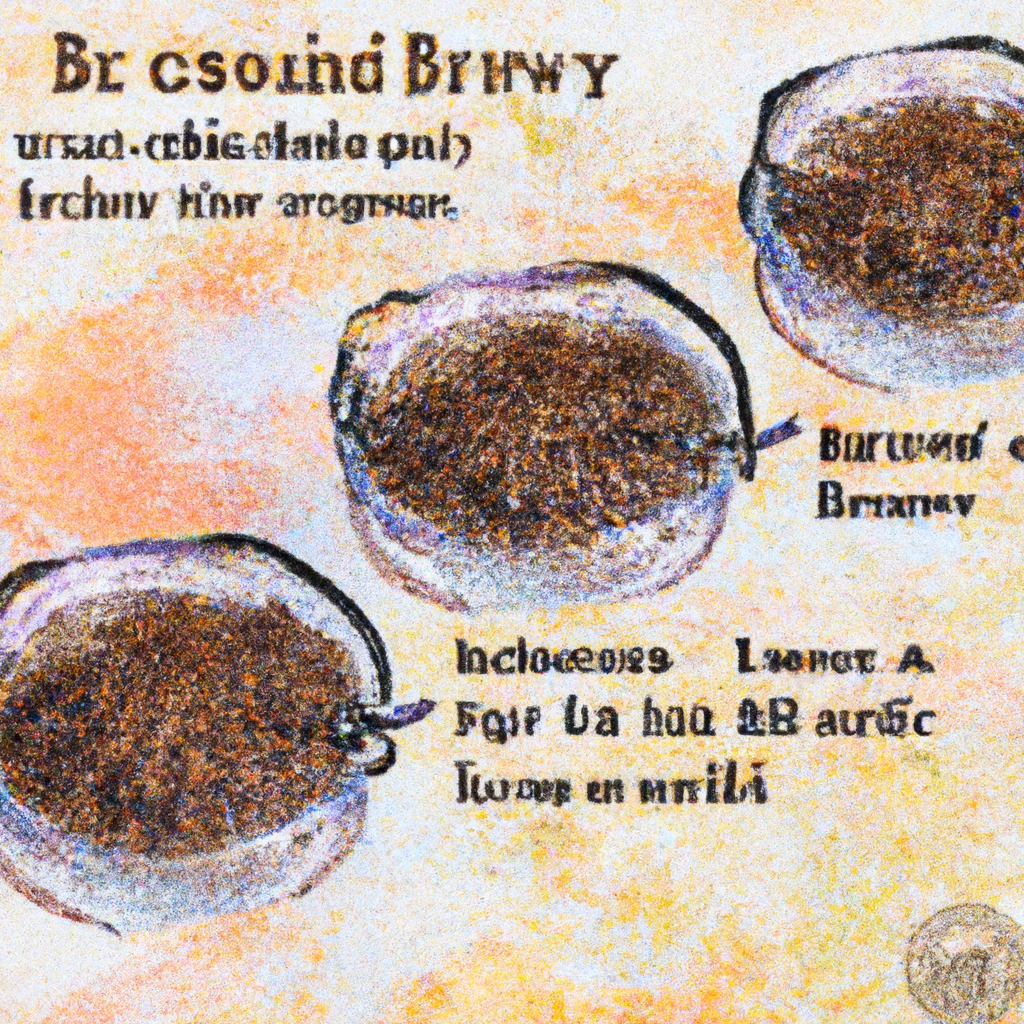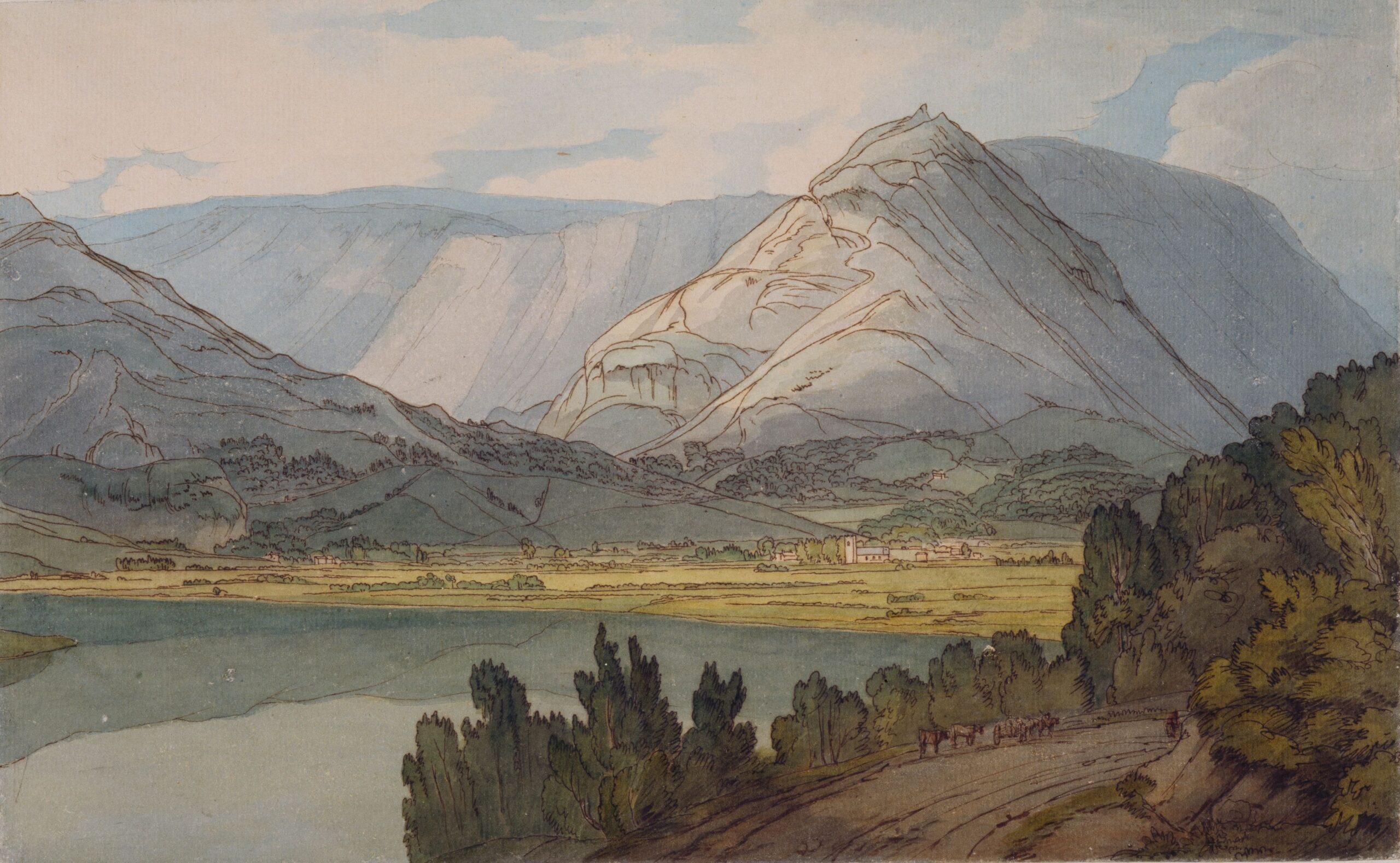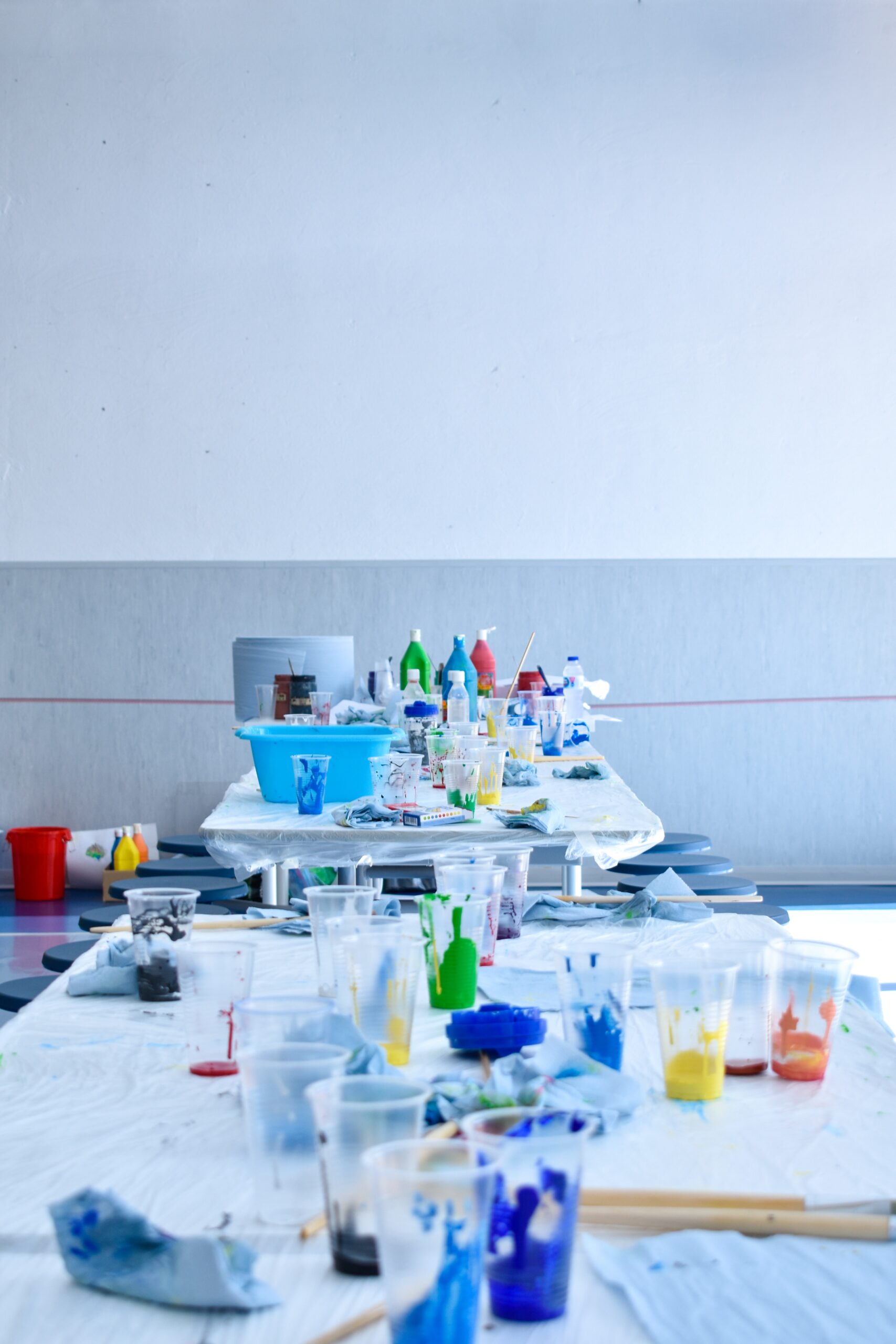In this article, you will learn a step-by-step process on how to create your very own brown gouache paint. Gouache, a versatile medium that combines the qualities of watercolor and acrylic paint, allows artists to achieve rich, opaque colors. By following these simple instructions, you will be able to mix the perfect shade of brown that adds depth and dimension to your artworks. So, let’s explore the art of creating brown gouache paint and unlock a world of endless possibilities for your artistic endeavors.
Choosing the Base Colors
Understanding the Color Wheel
Before diving into the process of making brown gouache paint, it is essential to have a basic understanding of the color wheel. The color wheel is a tool that artists use to organize and mix colors effectively. It consists of primary colors (red, yellow, and blue), secondary colors (orange, green, and purple), and tertiary colors, which are a combination of primary and secondary colors. Familiarizing yourself with the color wheel will help you navigate the process of choosing the right base colors for creating brown gouache paint.
Primary Colors for Mixing Brown
To create brown gouache paint, start with primary colors that can be easily mixed to achieve the desired shade. In the case of brown, the primary colors that are commonly used are red, yellow, and blue. These colors can be combined in various proportions to achieve a range of brown tones.
Secondary Colors for Mixing Brown
In addition to primary colors, secondary colors can also be used to create brown gouache paint. Secondary colors are created by mixing two primary colors together. The secondary colors that are helpful in mixing brown are orange, green, and purple. These secondary colors can be mixed with primary colors to achieve different shades of brown.
Mixing Primary and Secondary Colors
Combining Primary Colors
To create brown gouache paint, you can start by combining primary colors. A mixture of red, yellow, and blue in varying ratios will result in different shades of brown. For example, mixing red and yellow in equal proportions will create a warm, vibrant brown, while adding more blue to the mix will result in a cooler, earthy brown tone.
Creating Secondary Colors
Another approach to mixing brown gouache paint is by combining secondary colors. Mixing orange and blue in different proportions can create a range of warm brown tones. Similarly, combining green and red or purple and yellow can also yield unique shades of brown. Experimenting with different combinations of secondary colors will allow you to explore a variety of brown hues.
Mixing Primary and Secondary Colors
Beyond using primary and secondary colors individually, a combination of both can also produce interesting brown gouache paint. Mixing primary colors with secondary colors allows for greater control over the resulting shade and tone. For example, mixing red with green or blue with orange can create intriguing variations of brown. Don’t be afraid to experiment with different color combinations to discover your desired brown shade.
Working with Different Paint Forms
Using Tube or Jar Gouache Paint
Gouache paint can be found in either tube or jar form. Both forms have their advantages, and using them for creating brown gouache paint can yield different results. Tube gouache paint tends to be more concentrated and vibrant. It is ideal for mixing small quantities and achieving intense colors. Jar gouache paint, on the other hand, is more diluted and suitable for larger-scale mixing. Using either tube or jar gouache paint is a matter of preference, and you can experiment to determine which form works best for you.
Mixing Pigments with Watercolors
If you prefer to work with watercolors, you can still create brown gouache paint by mixing pigments. Watercolor pigments come in various shades, including different shades of red, yellow, and blue, which can be blended to achieve brown. Start by mixing small amounts of pigment in a palette, gradually adding various pigments until the desired brown shade is achieved. Remember to test the color on paper to ensure it matches your intended outcome.
Mixing Dried Paint Pigments
For artists who enjoy working with dried paint pigments, creating brown gouache paint is entirely possible. Dried paint pigments come in powdered form and allow for more flexibility in creating custom colors. Start by selecting a range of pigments in reds, yellows, and blues, along with any secondary colors you wish to incorporate. Mix the pigments in small amounts, ensuring they are finely blended. Add water gradually to create a smooth, paste-like consistency, and continue adjusting until your desired brown gouache paint is achieved.
Adding White and Black
Lightening Brown with White
To lighten the brown gouache paint, you can add white. White gouache paint will not only lighten the shade but also create a more opaque and pastel-like appearance. Start by adding a small amount of white paint to the brown, and gradually mix and test the color until the desired level of lightness is achieved. Adding white can be a useful technique when creating highlights or softer variations of brown.
Darkening Brown with Black
Conversely, if you want to darken the brown gouache paint, adding black is an effective method. Black gouache paint will deepen the shade while maintaining its opacity. Begin by incorporating a small amount of black paint to your brown mixture, gradually adding more as needed. Make sure to mix thoroughly and test the color regularly to ensure the desired level of darkness is attained. Using black can be particularly useful when working on shadows or creating richer, deeper tones.
Creating Different Shades of Brown
By adjusting the ratio of white and black gouache paint in your mixture, you can achieve a wide range of different shades of brown. Experiment with different proportions to create light, medium, and dark variants of brown. This will provide you with a versatile palette to work with, allowing for various applications and tonal effects in your artwork.

This image is property of images.unsplash.com.
Experimenting with Complementary Colors
Identifying Complementary Colors
Complementary colors are pairs of colors that are opposite each other on the color wheel. When combined, they create high contrast and can be used to create vibrant effects. When working with brown gouache paint, it is essential to identify its complementary colors to enhance and modify its appearance. The complementary color of brown is typically blue. Identifying other potential complementary colors that work well with brown, such as shades of purple or green, can add unique dimensions to your artwork.
Mixing Complementary Colors
Mixing complementary colors with brown gouache paint can yield intriguing results. Adding small amounts of complementary colors, such as a touch of blue to brown, can create depth and cool undertones. Experiment by gradually mixing complementary colors into your brown mixture and observing the impact on the overall hue and vibrancy. Remember to mix and test until the desired visual impact is achieved.
Adding Complementary Colors to Brown
Another way to incorporate complementary colors is by using them alongside brown gouache paint. Doing so can enhance the richness of brown and create contrast within your artwork. For example, using blue as a background color while incorporating brown as the foreground focus can create a visually striking composition. Consider experimenting with different combinations of brown and its complementary colors to achieve captivating effects in your artwork.
Creating Warm and Cool Browns
Using Warm Colors
Warm colors, such as red, yellow, and orange, can be used to create warm brown tones. By incorporating these colors into your brown gouache paint mixture, you can infuse warmth and energy into your artwork. Experiment with different proportions of warm colors to achieve varying degrees of warmth and intensity in your brown gouache paint. Warm browns are often associated with earthy, comforting tones and can add a sense of coziness to your artwork.
Using Cool Colors
On the other hand, cool colors, such as blue, green, and purple, can be used to create cool brown tones. Adding these colors to your brown gouache paint mixture will introduce a sense of tranquility and calmness to your artwork. Cool browns are often associated with nature and can evoke a serene atmosphere in your compositions. Explore different combinations of cool colors to discover the ideal cool brown tone for your artistic vision.
Achieving Various Temperature Effects
By skillfully incorporating warm and cool colors into your brown gouache paint, you can achieve various temperature effects within your artwork. Experiment with different ratios of warm and cool colors to create nuanced brown tones that evoke specific emotions or moods. Whether you aim to convey warmth, coolness, or a combination of both, the careful selection and mixing of colors will play a pivotal role in achieving the desired temperature effects in your artwork.

This image is property of images.unsplash.com.
Utilizing Earth Tone Pigments
Exploring Natural Earth Pigments
Natural earth pigments are derived from minerals and offer a diverse range of hues that can be utilized when creating brown gouache paint. These pigments often consist of various shades of reds, yellows, and browns, making them ideal for achieving earthy tones. Experiment with different natural earth pigments, such as sienna, ochre, and umber, to create unique brown shades with a natural aesthetic. Natural earth pigments add depth and authenticity to your artwork, providing a sense of connection to the natural world.
Mixing Earth Colors
By combining different earth tone pigments, you can achieve an even wider range of brown gouache paint shades. Mix various shades of red, yellow, and brown earth pigments to create nuanced and complex brown tones. Experiment with different proportions and combinations to discover the specific hues that resonate with your artistic vision. The versatility of earth tone pigments allows for the creation of diverse and visually captivating brown colors.
Enhancing Brown with Earth Tones
Earth tone pigments can also be used to enhance and modify your brown gouache paint. Adding a touch of sienna or ochre to your brown mixture can create subtle undertones and add depth to your artwork. Similarly, incorporating umber or burnt sienna can introduce richer, earthier qualities to your brown gouache paint. Experiment with different earth tone pigments to customize your brown shades and elevate the overall visual impact of your artwork.
Adding Texture and Depth
Experimenting with Different Brush Strokes
To add texture and depth to your brown gouache paint, experiment with different brush strokes. Varying the pressure, direction, and size of your brush strokes can create visual interest and convey different textures within your artwork. Experiment with techniques such as dry brushing, stippling, or cross-hatching to add dimensionality to your brown gouache paint. Each brush stroke technique can evoke a unique mood or emphasize specific elements in your artwork.
Layering and Glazing Techniques
Layering and glazing techniques can also enhance texture and depth in your brown gouache paint. With layering, you can apply multiple translucent layers of paint on top of each other, creating subtle variations in tone and texture. Glazing involves applying a thin, transparent layer of paint over a dry layer, intensifying the color and adding depth. Experimenting with layering and glazing techniques will allow you to create intricate and visually captivating effects in your brown gouache paint.
Incorporating Multiple Tones in Shadows and Highlights
To achieve a sense of realism and depth in your artwork, it is essential to incorporate multiple tones within your brown gouache paint. Shadows and highlights play a crucial role in creating dimensionality. Experiment with mixing slightly darker or lighter shades of brown for shading and highlighting specific areas. Strategic placement of these tones can provide a greater sense of three-dimensionality, making your artwork come to life.

Making Adjustments and Corrections
Lightening or Darkening the Shade
If you find that the brown gouache paint you have created is not exactly the shade you envisioned, don’t worry. Adjustments can be made by adding small amounts of additional colors. To lighten the shade, add a touch of white. Conversely, if you need to darken the shade, incorporate a little black or a darker brown pigment. Remember to mix and test your adjustments gradually, ensuring you achieve the desired color before applying it to your artwork.
Fixing Undertones
Undertones are subtle hues that are present beneath the surface color. If you notice an unwanted undertone in your brown gouache paint, such as a green or purple tint, adjustments can be made to neutralize it. For instance, adding a small amount of the complementary color to the mixture can help cancel out the undertone. Continuously observe and adjust until the undertone is eliminated or minimized to your satisfaction.
Neutralizing a Color
Sometimes, you may want to create a neutral brown that lacks strong undertones. To achieve this, mix equal proportions of primary and secondary colors, ensuring they balance each other out. This technique can help you create a clean, neutral brown gouache paint that can serve as a versatile base for various applications. Maintain a careful balance and experiment to achieve the perfect neutral brown hue for your artistic needs.
Storing and Preserving Homemade Gouache Paint
Choosing Suitable Containers
When storing homemade gouache paint, it is crucial to choose suitable containers that can preserve the paint’s freshness and prevent drying or contamination. Opt for airtight containers that are specifically designed for storing paint. Glass jars with tight-fitting lids or small plastic containers with screw-on caps are excellent choices. Ensure that the containers are clean, dry, and properly labeled for easy identification.
Keeping the Paint Fresh
To keep your homemade gouache paint fresh, it is essential to protect it from drying out. When finished with your painting session, ensure that the container is tightly sealed to prevent air exposure. Excessive exposure to air can cause the paint to dry and harden quickly. Consider storing the containers in a cool, dry place away from direct sunlight, as heat and sunlight can also affect the paint’s consistency and freshness.
Ensuring Longevity
With proper care and attention, homemade gouache paint can have a relatively long shelf life. However, over time, the paint’s consistency may change or become less vibrant. To prolong the paint’s longevity, periodically inspect the containers for any signs of mold or discoloration. If the paint appears to have dried out, add a small amount of water to rehydrate it and mix thoroughly to restore its original consistency. Regularly checking and maintaining your homemade gouache paint will ensure its optimal performance for an extended period.
In conclusion, creating brown gouache paint involves a careful selection and mixing of colors, whether they are primary, secondary, complementary colors, or earth tone pigments. By understanding the color wheel and experimenting with different combinations, you can achieve a wide range of brown hues with various temperature effects. Adding white and black allows you to lighten or darken the shade of brown, while incorporating complementary colors enhances its visual impact. By utilizing different brush strokes, layering techniques, and multiple tones in shadows and highlights, you can add texture and depth to your artwork. Adjustments and corrections can be made to achieve the desired color and neutralize any unwanted undertones. Proper storage and preservation of the homemade gouache paint will ensure its freshness and longevity for extended use. With these techniques and considerations in mind, you can confidently create and work with brown gouache paint to bring your artistic visions to life.




